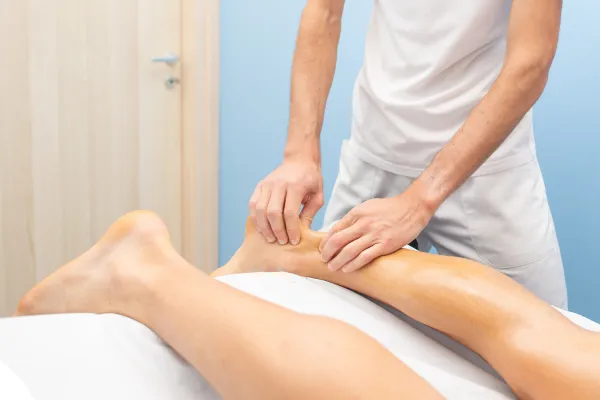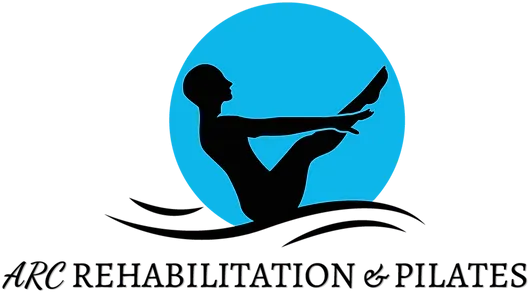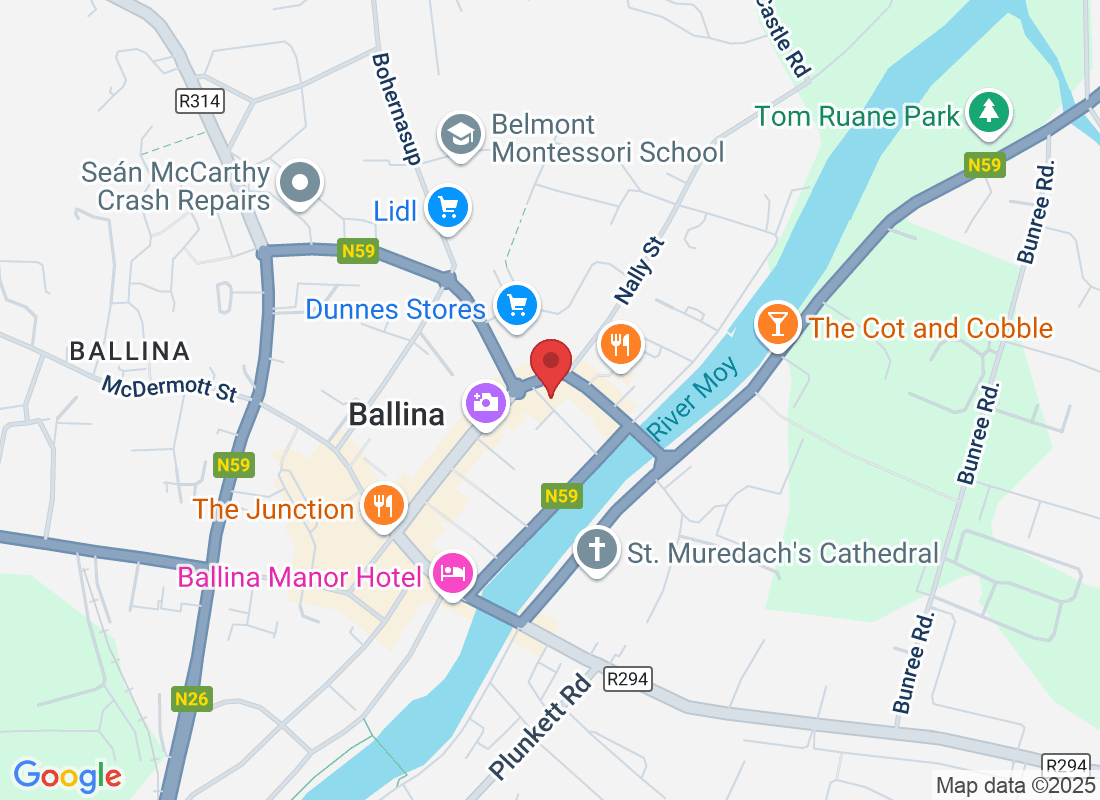Tips & Advice From ARC Rehabilitation & Pilates

Achilles Tendonitis Recovery: Pilates Protocols for Healing
Achilles Tendonitis Recovery: Pilates Protocols for Healing
The Achilles tendon, a powerful band of tissue connecting your calf muscles to your heel bone, plays a crucial role in activities like walking, running, and jumping. However, overuse or sudden strain can lead to Achilles tendonitis, causing pain, stiffness, and inflammation.
If you're struggling with Achilles tendonitis, don't despair. Recovery is possible, and Pilates can be a valuable tool in your rehabilitation journey. This blog post, dives deep into Achilles tendonitis recovery, exploring the causes, symptoms, and how Pilates can effectively guide you back to pain-free movement.
Understanding Achilles Tendonitis
Achilles tendonitis occurs when the Achilles tendon becomes inflamed due to repetitive stress or micro-tears. This inflammation triggers pain, tenderness, and stiffness, especially in the morning or after activity.
Causes of Achilles Tendonitis:
Overtraining: Sudden increases in training intensity or duration can overwhelm the tendon, leading to inflammation.
Tight calf muscles: Tightness in the calves can limit ankle mobility and put extra stress on the Achilles tendon.
Improper footwear: Shoes with poor cushioning or inadequate arch support can contribute to tendon strain.
Biomechanical issues: Flat feet, high arches, or leg length discrepancies can alter how weight is distributed on the foot, increasing stress on the Achilles tendon.
Symptoms of Achilles Tendonitis:
Pain and tenderness around the Achilles tendon, especially in the morning or after activity.
Stiffness in the ankle, making it difficult to point your toes.
Swelling around the Achilles tendon.
Redness or warmth in the affected area (in some cases).
The Role of Pilates in Achilles Tendonitis Recovery
Pilates offers a safe and effective approach to Achilles tendonitis recovery. Its focus on core strength, controlled movements, and proper alignment helps reduce stress on the tendon while promoting healing. Here's how Pilates benefits Achilles tendonitis recovery:
Improved Flexibility: Pilates stretches tight calf muscles, improving ankle mobility and reducing stress on the Achilles tendon.
Enhanced Strength: Pilates exercises strengthen the calf muscles and surrounding stabiliser muscles, improving overall support for the ankle joint.
Pain Management: Gentle, controlled movements in Pilates promote blood flow to the affected area, aiding in the healing process and reducing pain.
Balance and Coordination: Pilates exercises improve balance and coordination, reducing the risk of future injuries.
Body Awareness: Pilates teaches you to move with proper alignment and control, minimising stress on the Achilles tendon during everyday activities.
Pilates Protocols for Achilles Tendonitis Recovery
Phase 1: Pain Reduction and Inflammation Control (Acute Stage)
During the initial stage, the focus is on reducing pain and inflammation. Exercises are gentle, low-impact, and performed with minimal weight-bearing. Here are some examples:
Short Foot Exercises: While lying down, shorten your foot by pulling your toes towards your shin. Hold for a few seconds and relax. Repeat 10-15 times.
Calf Raises with Towel: Sit on a chair with a towel under your toes. Slowly push your heel down through the towel, raising your toes. Hold for a few seconds and slowly lower. Repeat 10-15 times.
Isometric Calf Holds: Stand with your hands on a wall or chair for support. Raise onto your toes and hold for a few seconds. Slowly lower your heel. Repeat 10-15 times.
Phase 2: Strengthening and Mobility Improvement (Subacute Stage)
Once the pain subsides, focus on strengthening the calf muscles and improving ankle mobility. Exercises gradually increase in intensity and can incorporate light weights. Examples include:
Eccentric Calf Raises: Stand on a step with the balls of your feet hanging off the edge. Slowly lower your heel, emphasising the lowering motion. Push back up onto your toes. Repeat 10-12 times.
Single Leg Bridge: Lie on your back with one knee bent and the other foot flat on the floor. Lift your hips off the ground, squeezing your glutes. Hold for a few seconds and lower. Repeat 10-12 times per leg.
Ankle Circles: Sit in a chair and slowly rotate your ankles in both directions, making small circles. Repeat 10 times in each direction.
Phase 3: Advanced Strengthening and Functional Training (Return to Activity Stage)
This final stage prepares you for a safe and successful return to your desired activity level. Exercises become more challenging, incorporating bodyweight exercises, resistance bands, and Pilates equipment like the Reformer and Cadillac. The focus shifts towards improving power, agility, and sport-specific movements.
Examples of Advanced Exercises:
Pilates Reformer Calf Raises: Using the Reformer footplate with added resistance from the straps, perform controlled calf raises with variations like single-leg raises or isometric holds.
Cadillac Calf Raises with Leg Springs: Lie on your stomach on the Cadillac with your heels hooked under the leg springs. Extend your heels down against the resistance, focusing on a controlled downward movement.
Box Jumps (modified): Begin with low box jumps, focusing on soft landings and proper knee and ankle alignment. Gradually increase the height as your strength and confidence improve.
Remember: Throughout your recovery journey, communication with your healthcare professional is crucial. They can guide you through the stages, monitor your progress, and address any concerns you may have.
Conclusion
Achilles tendonitis recovery can be a frustrating yet manageable process. Pilates, with its focus on controlled movements, flexibility, and strengthening, offers a valuable tool to guide you back to pain-free movement. By following a structured Pilates protocol tailored to your specific needs and progressing gradually, you can effectively heal your Achilles tendon and return to your favourite activities with confidence.
At ARC Rehabilitation and Pilates, we understand the challenges of Achilles tendonitis. Our team of experienced physiotherapists and certified Pilates instructors can create a personalised recovery programme.
Ask ARC Rehabilitation & Pilates And Their Team
Fill in the form to request a call from our team. One of our team members will call you for FREE and answer any questions or concerns you may have about your condition
Where To Find ARC Rehabilitation & Pilates

If you have any questions before scheduling an appointment or for general inquiries, please use the contact us button below. Our team will promptly reach out to assist you.
Opening Hours
Monday: 9:30am – 8:00pm
Tuesday: 9:30am – 8:00pm
Wednesday: 9:30am – 8:00pm
Thursday: 9:30am – 8:00pm
Friday: 9:30am – 1:00pm
Saturday: Closed
Sunday: Closed

